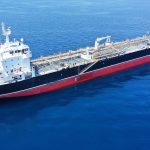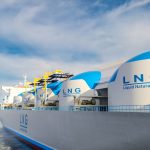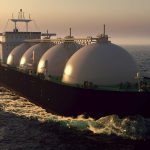

How to Ship LPG: A Comprehensive Guide for Charterers?
As a charterer or LPG chartering manager, shipping LPG overseas requires careful planning and coordination. From deciding on the quantity to be shipped to selecting the right vessel and finalizing the chartering agreement, there are several steps involved in the process. This guide provides a comprehensive overview of how to ship LPG from the perspective of the charterer.
Step 1: Assessing the LPG Quantity to Ship
The first step in shipping LPG overseas is determining the quantity of LPG to be shipped. As a charterer, it is essential to consider market demand, available supply, and storage capacity at the destination.
Key Considerations:
- Market Demand: Analyze market trends and demand forecasts to determine the required quantity of LPG.
- Supply Availability: Ensure that there is sufficient supply of LPG available for shipment.
- Storage Capacity: Consider the storage capacity at the destination to ensure that the quantity shipped can be accommodated.
Step 2: Selecting the Right Vessel
Choosing the right vessel is crucial for the safe and efficient transportation of LPG. As a charterer, it is essential to consider factors such as vessel size, capacity, and technical specifications.
Key Considerations:
- Vessel Size: Choose a vessel that can accommodate the required quantity of LPG.
- Capacity: Consider the vessel’s LPG storage capacity and ensure that it meets the shipping requirements.
- Technical Specifications: Verify that the vessel complies with safety regulations and technical standards for transporting LPG.
Step 3: Contacting Shipbrokers or Ship Owners/Ship Management Companies
Once the quantity of LPG to be shipped and the vessel requirements have been determined, the next step is to contact shipbrokers or ship owners/ship management companies to arrange the shipment.
Key Considerations:
- Use of Platforms like Chartership.com: Utilize online platforms such as Chartership.com to connect with shipbrokers and ship owners.
- Shortlisting Candidates: Shortlist potential candidates based on their experience, reputation, and track record in LPG chartering.
Step 4: Negotiating and Signing the Charter Party Agreement
After shortlisting candidates, negotiate the terms of the charter party agreement and finalize the details of the LPG shipment.
Key Considerations:
- Charter Party Agreement: Ensure that the charter party agreement clearly outlines the terms and conditions of the LPG shipment, including the quantity, freight rates, laytime, and demurrage provisions.
- Insurance: Verify that the vessel is adequately insured and that the charter party agreement includes provisions for insurance coverage.
- Finalizing the Agreement: Once the terms have been negotiated, sign the charter party agreement and confirm the details of the LPG shipment.
Step 5: Preparing for the Shipment
After finalizing the charter party agreement, it’s time to prepare for the LPG shipment. This involves coordinating with the vessel owner or operator, as well as ensuring that all necessary documentation and permits are in place.
Key Considerations:
- Vessel Preparation: Coordinate with the vessel owner or operator to ensure that the vessel is ready for the LPG shipment. This may involve conducting safety inspections and making any necessary modifications to the vessel.
- Documentation and Permits: Ensure that all necessary documentation and permits are in place for the LPG shipment. This may include bills of lading, certificates of origin, and import/export permits.
Step 6: Loading the LPG Cargo
Once the vessel is ready, it’s time to load the LPG cargo. This process must be carefully managed to ensure the safe and efficient loading of the LPG onto the vessel.
Key Considerations:
- Loading Procedures: Follow strict loading procedures to ensure the safe handling of the LPG cargo. This may include following specific loading protocols and using specialized equipment.
- Safety Precautions: Implement strict safety precautions during the loading process to minimize the risk of accidents or spills.
Step 7: Monitoring the Shipment
Once the LPG shipment is underway, it’s essential to monitor the progress of the shipment and address any issues that may arise.
Key Considerations:
- Voyage Monitoring: Monitor the progress of the LPG shipment throughout the voyage to ensure that it reaches its destination safely and on schedule.
- Communication: Maintain regular communication with the vessel’s captain and crew to address any issues that may arise during the voyage.
Step 8: Unloading the LPG Cargo
Once the vessel reaches its destination, it’s time to unload the LPG cargo. This process must be carefully managed to ensure the safe and efficient unloading of the LPG from the vessel.
Key Considerations:
- Unloading Procedures: Follow strict unloading procedures to ensure the safe handling of the LPG cargo. This may include following specific unloading protocols and using specialized equipment.
- Safety Precautions: Implement strict safety precautions during the unloading process to minimize the risk of accidents or spills.
Step 9: Post-Shipment Evaluation
After the successful unloading of the LPG cargo, it’s important to conduct a post-shipment evaluation to assess the overall performance of the shipment and identify any areas for improvement.
Key Considerations:
- Performance Evaluation: Evaluate the overall performance of the shipment, including factors such as timeliness, safety, and cost-effectiveness.
- Lessons Learned: Identify any lessons learned from the shipment and use them to improve future LPG shipments.
Step 10: Continuous Improvement
As a charterer or LPG chartering manager, it’s important to continually evaluate and improve the LPG shipping process to ensure continued success.
Key Considerations:
- Process Optimization: Continuously look for ways to optimize the LPG shipping process, improve efficiency, and reduce costs.
- Stay Informed: Stay informed about changes in regulations, technology, and best practices in the LPG shipping industry.
Conclusion: Ensuring Safe and Efficient LPG Shipping
Shipping LPG overseas demands meticulous planning, coordination, and strict adherence to safety regulations. By following the comprehensive steps outlined in this guide, charterers can ensure the secure and efficient transportation of LPG to destinations worldwide. From determining the quantity to selecting the right vessel, negotiating the charter party agreement, and overseeing the entire shipping process, careful management is crucial. Continuous evaluation and improvement further guarantee the optimization of future LPG shipments, meeting the energy needs of consumers and businesses while upholding the highest safety standards in the industry.
Related posts


LNG Tanker Valuation: What Influences the Sale Price?

Buy and Sell Offshore Vessels






